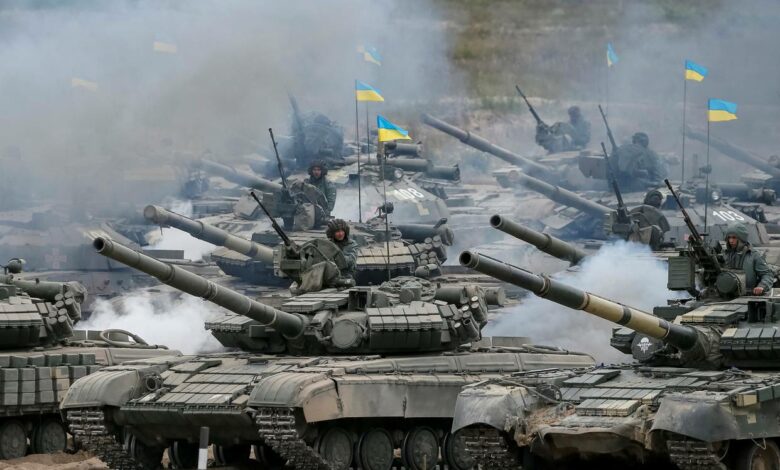Russia-Ukraine crisis and its impact on India

Conflict happens when there are disagreements between the country and its citizens. As a result of a disagreement of opinion, one’s needs, and interests are jeopardized. This is a situation where people experience a physical, emotional, political, social, etc. threat. They try to clear their perceptions based on their values, ethics, habits, assumptions, circumstances, and gender. It is possible to identify new opportunities by turning conflict into a creative learning experience.
The conflict which is arousing between Ukraine and Russia stems from the Ukrainian President’s refusal of the Single Economic Agreement with the European Union in terms of an Association Agreement. The President’s decision was unacceptable to the people and to the country, so the people started protesting against their President. There are several issues that play an important role in a conflict. The escalating confrontation between Ukraine and Russia is the result of the Ukrainian President’s rejection of the EU Union’s sole profitable offer of an association agreement. The decision created by the president wasn’t acceptable to the people and their country, so people began to protest against their president.

In Crimea, chemical plants, and ore are mined. In line with UK Consult, 1.6 million heaps of grain have been exported, which is 6.6 percent of the country’s exports. Russia had fears if Ukraine signed an association agreement with the EU Union that result in inexpensive Europe commodities in Ukraine. The world is witnessing the deaths of innocent civilians, the destruction of homes and infrastructure, and the massive displacement of families in and out of Ukraine.
Russia Ukraine Conflict was felt Worldwide?
The conflict affected the whole country and is still affecting the overall groceries and its access to wheat, an export product of Ukraine for countries like Yemen, Libya, and Lebanon that have already faced high levels of food insecurity.
Shrinking Economy
More violence devastated Ukraine’s already weakened infrastructure. The country’s healthcare system, battered by COVID19, is fragile, and its economy has slumped drastically. Food and fuel shortages were acute, and public services were dysfunctional.
Refugees were in danger
As attacks targeted civilians, more Ukrainians were being displaced from their homes, country, and borders. The U.S. ambassador had warned that the Russian invasion might displace up to five million people, who would be part of what’s already a record thirty-one million refugees and asylum seekers around the world. The four million refugees who fled Ukraine were mostly women and children.

The women that were displaced inside Ukraine, were in a fear of violence, exploitation, and abuse. European countries were taking appropriate measures to prepare for people fleeing. However, these efforts need to be scaled up quickly and translated into meaningful and concrete support.
Impact on India
Oil prices have risen by 20% since the outburst of the war. The influence on the global front in the form of rising petroleum prices may have an indirect impact in the form of cost inflation. The war destroyed India’s cooking oil market, with the country importing more than 90% of its sunflower oil from Russia and Ukraine combined. Russia’s invasion of Ukraine took many innocent people’s lives. It is damaging the economies of numerous countries, along with India.
Crude oil charges have been raised even earlier than the Russia-Ukraine struggle. After Russia’s invasion of Ukraine, numerous international locations imposed large sanctions on Russia. So, numerous international locations that have been receiving oil from Russia are actually making offers to different oil-wealthy international locations. Since Russia is the Global third-biggest oil manufacturer after the United States and Saudi Arabia, this led to a fee upward push to petroleum due to much less delivery and the equal demand for it.
/cdn.vox-cdn.com/uploads/chorus_image/image/36987732/493748541.0.jpg)
India is transporting large quantities of products, which include pharmaceuticals, tea, electronics, etc. to Russia and Ukraine. So, the Ukraine disaster will affect the exporters in those industries. An upward push in devastated Petroleum prices and diesel charges may soar, which could bring about fee upward push of ordinary commodities which include grains and veggies due to the upward push within side the fee of transporting those commodities. This can increase inflation, which is already on an upward push even earlier than the Ukraine disaster because of the COVID-19 pandemic. So, in addition, growth in inflation can have an effect on the Indian financial system negatively.
Moreover, we rely on Ukraine and Russia for enormous products and uncooked items, which include sunflower oil, weapons, coal, palladium, neon fuel line, etc. This outcome is an excessive scarcity of those items and an upward push of their charges. This is another reason for an upward push in inflation. India is relying on Russia for weapons. So, until India unearths a few opportunity sources, it’ll be tough for the defense sector. Russia’s Palladium and Ukraine’s neon fuel lines are crucial for semiconductor manufacturing.
Global semiconductor delivery is already under pressure because of a growing call for customer merchandise that includes chips and, additionally, due to disruption in manufacturing at some point from pandemics. The conflict between Russia and Ukraine will also have an impact on semiconductor delivery. This will put stress on the delivery of many products which include smartphones, laptops, vehicles, etc. So, this could have an effect on the associated industries, which include the vehicle enterprise, electronics enterprise, etc.
India is in talks with Egypt and Turkey to export wheat. So this year, India’s wheat exports will increase. The war between Russia and Ukraine is having a negative impact on the world economy. Many countries, including India, are affected. Inflation is expected to get worse and lower the purchasing money conversion rate of the common people.




